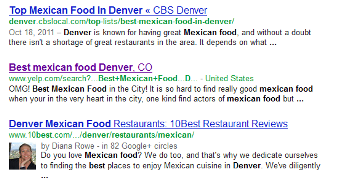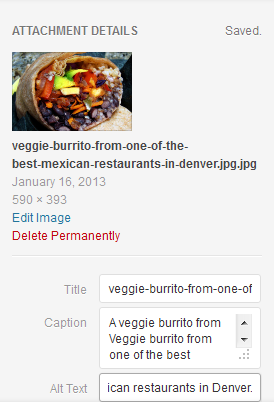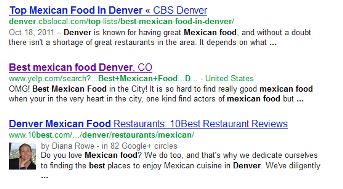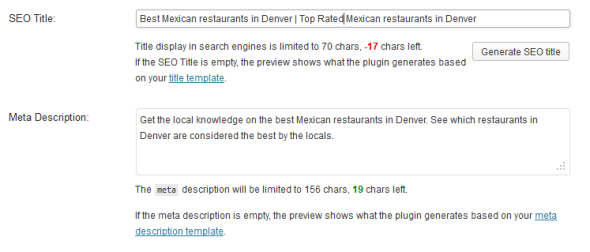Do you find yourself drowning in great ideas but unable to implement any of them because you’re either paralyzed by choice or you’re too stuck on fighting today’s fires?
Yeah, me too. Creativity is awesome until it starts to overwhelm you. (Tweet this!)
Today’s guest post comes from Michelle Nickolaisen, creator of Bombschelle. Michelle makes systems/productivity/organization/all that incredibly boring sounding stuff incredibly NOT boring so that you + your biz can reap the rewards.She’s worked with six figure business owners behind the scenes and helped them take their business to a new level without stressing out about it. She also teaches, consults and helps organize product launches.
Michelle believes that “organized” and “creative” can co-exist in perfect harmony. Read on for her practical advice on combing through the ideas in your head and determining which ones can/should be actioned:
One of those problems-that’s-kinda-good-to-have is the problem of too many ideas. On the one hand, it’s something of a blessing to have all of these ideas zipping around your head like hyperactive kittens with a ball of string. On the other hand, it can also be headache inducing and give you the paralyzing fear of not knowing which idea to start on next. If you’re paralyzed, you’re not taking action; and if you’re not taking action, those ideas don’t end up doing any good.
How do you pick one idea to start on next? For those of us who have this problem, it can be incredibly difficult to put one on the backburner. We want to work on everything at the same time and create amazing things, but that’s not always possible (and can often just lead to not finishing any of the ideas you’re working on – especially if you’re not a meticulous planner).
The secret is to look to your priorities to show you which idea to work on next. This might be fairly obvious and sound like a great idea, but can be hard to carry out in practice. So instead of just telling you that and leaving you hanging, I’m going to show you a process for figuring out what, exactly, your priorities are right now, and how that fits in with the ideas running around in your head.
Go ahead and download this worksheet to help you with the process, and grab a pen & paper. (Alternately, you can just write through this without the worksheet. Whatever floats your boat!)
Write down all of your current ideas that you’re having trouble choosing between. You don’t have to write down the idea in intricate detail, but enough so that upon referring back to this, you’ll know exactly which idea you were speaking of. After you write down all of your ideas, go back through, and for each idea write down two things:
- What you’ll get from working on the idea and bringing it to fruition. Money? Pride? Fun? Respect? Two or three of these? Whatever it is, write it down.
- An approximate estimate for how long it will take you to complete this idea. Be realistic, but try not to give yourself too much wiggle room. Think about your current and upcoming commitments, how much free time and energy they’ll leave you, and how flexible all of these things are.
After you finish that, set it aside.
We’re going to zoom out now. Think about what you want to be doing, how you want to feel, and what you want to have in the next one, three, and six months. (Otherwise known as your goals – but thinking of it in these terms can bring things into super-clear focus.) Write this down, in detail.
Look at what you wrote down, and pick out the common threads – usually there will be two or three. These are your top priorities for the next several months. Now, keeping these priorities in mind, skim back over your answers for what you’ll get from working on each idea. And then figure out which idea matches best with your current priorities – and can be completed within the next 1-6 months. If there’s more than one idea that suits the requirements, choose the one that you’re most excited about, or that you can finish first – this’ll build momentum that can transfer over into working on your other ideas.
(Of course, it is possible to be working on more than one thing at once! And many people do it incredibly well. If you’re one of these people, you can use this advice to help choose which idea to make your top priority, letting the others take more of a “back burner” status – working on them when you have the time, energy, & inclination to do so.)
In the meantime, you need to do something with the ideas that you aren’t working on at the moment. Part of the reason we can have such an inordinately hard time choosing one idea to work on is that we feel that by doing so, we’re abandoning the other ideas. If you do something that ensures you can come back to those other ideas later, you’re a lot more likely to be able to commit to working on this one idea for now. The best way to do this is to just take your descriptions of the ideas that you’ve already written and store them somewhere – whether online or off. They can be the start of your idea garden, and you can add new ideas as you come up with them.
In case you missed the link above, you can download your worksheet here. And follow Michelle @_chelleshock
Photo credit: Lamantin on Flickr











